
views
Writing Original Work
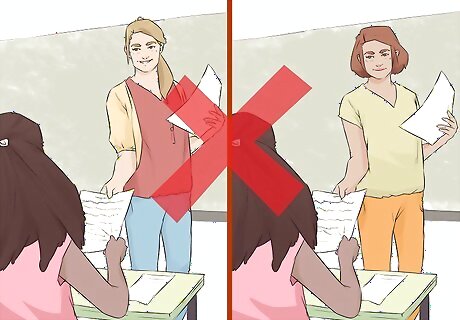
Avoid submitting the same paper to different instructors. In an academic setting, you should never recycle an old paper without making significant changes. Not only will you risk not receiving credit for the assignment, but you will not learn anything new. If you submit a recycled paper through a plagiarism detecting program like turnitin.com, it will likely show up as plagiarized.

Review your existing work on a topic before writing a new text. This is similar to researching a topic before writing your own take on it. By looking over your work beforehand, you avoid writing a new text only to discover that you've accidentally duplicated ideas or passages from a previous work. If you're writing about strongly held views, it's easy to accidentally duplicate your previous writing. Don't beat yourself up over it. Instead, be proactive. Treat your own work the same way you do someone else's.
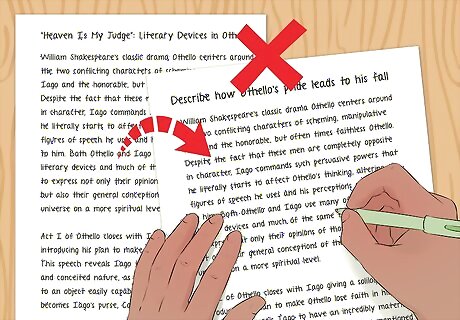
Avoid copying and pasting from one paper to another. While it might make writing your new paper easier, this is a sure fire way to self plagiarize. Never copy and paste passages from an old paper, even if you think you can significantly edit them. Your material will still be too similar.

Talk to your instructor before using previous work in an academic setting. Your instructor can help you find a new direction for your ideas if you want to revisit a previous paper. Expanding on your existing work can be a great way to grow academically, but you need to show significant development. Your instructor can help you decide how to accomplish this goal. Improving on ideas is a purpose for academic writing, even if those ideas are your own. By making your instructor aware of your previous work, you can ensure that you show enough development on your ideas to receive full credit for the assignment. It's best to check with both your current instructor and the previous instructor before reusing part of a paper.

Use your previous writing as support for new ideas, not in place of them. Most of the text you're writing should be new, original writing. The ideas you incorporate from your previous work should act as support for the new ideas, not the bulk of the new paper. This is similar to how you use someone else's ideas. They can provide background information on the topic or support for a new point you are making. For example, you may use a quote from a previous paper as support in a body paragraph. You may include one or two sentences from your prior work within one paragraph. Alternatively, you may use a previous essay you wrote as a launching place for your latest paper. Briefly explain your prior work to the reader, but let this work stand on its own.
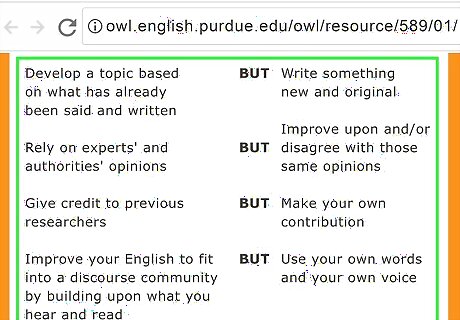
Recognize the difference between self plagiarizing and having a voice. Every writer will develop their own voice and style to the extent that regular readers may be able to spot their favorite writer's work. Even if you are a beginning writer, you may have already developed your own voice that comes through. This means your writing may sound similar across several papers even though you aren't recycling your ideas. If you're worried that you may have self plagiarized, review the text to see if the ideas you present are similar to your previous work or if your phrasing is similar. You may just have your own style of writing.
Making Significant Changes to Your Work
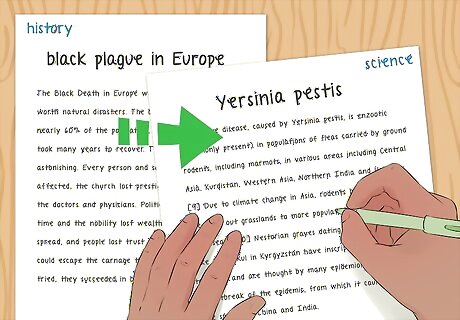
Reframe your ideas to fit a different purpose, audience, or topic. If you are passionate about a topic, you may be able to reuse ideas discussed in a previous paper if you change the way you present them. This could mean writing about the same topic for different subject areas, different levels of experience, or different perspectives. You may also be able to adapt your ideas across topics, making them fresh. For example, you may be able to submit a paper to a history class about the history of the black plague in Europe, and then reuse some of your ideas when writing about the spread of disease for a science class. Similarly, you could rewrite ideas from a scholarly article that you wrote to make it more appropriate for a blog audience.

Expand on your previous ideas. If you do incorporate your old ideas, make sure that you add something that is new and different. Your reader expects to encounter something new and different, so keep that in mind. Make a new interpretation of your old ideas, or take them one step forward. For example, add a new conclusion or take a new stance. Consider your old ideas as background information rather than the main part of your text. Minimize how much of your old work you include in a new text.
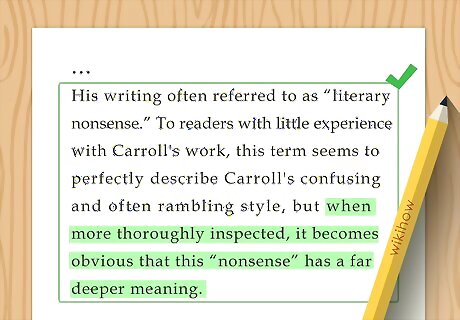
Explain how your current ideas build on or differ from previous ideas. Not only will this help your reader understand which parts of the text are new, it will also help you ensure that your current work does not self plagiarize. You can do this similarly to how you explain quotes, paraphrases, or summaries from work done by others. Include your explanation in your commentary.
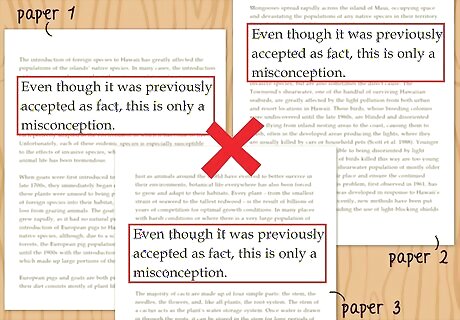
Avoid reusing data, as it could confuse readers. When you reuse data without telling the reader that it's from a previous study, it makes it appear as though multiple studies were completed. This suggests that you've gotten results from multiple sample groups, which is misleading and dishonest. Always state the original study you got your data from, even if it was your work. If you have made new conclusions on existing data, make it clear to the reader that you are using the same data as you previously used.
Referencing Your Previous Work
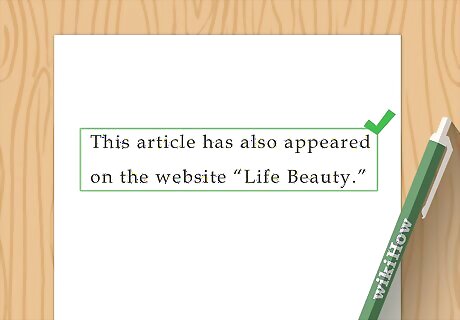
State where your work has been previously submitted or published if applicable. In some cases, it may be acceptable for you to reuse a text. For example, your instructor may be willing to accept previous work, or a blog post you've written may be published on two sites. However, you need to let the reader know that this is not the first time you're using this text. If you're posting the same article in multiple places, you may include a short statement at the end. You could write something like, “This article has also appeared on the website “Life Beauty.” If you're turning in an assignment, ask your teacher if they'd like you to add a formal statement to the paper or if a verbal statement is enough.
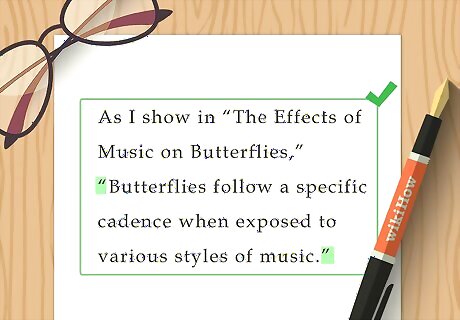
Put quotation marks around direct quotes from your previous texts. You should also state that you are the author of the quote and where it first appeared. You could write the following: As I show in "The Effects of Music on Butterflies," "Butterflies follow a specific cadence when exposed to various styles of music.” If your quote is more than 2 sentences long or your style guide requires it, set it off in its own block of text.
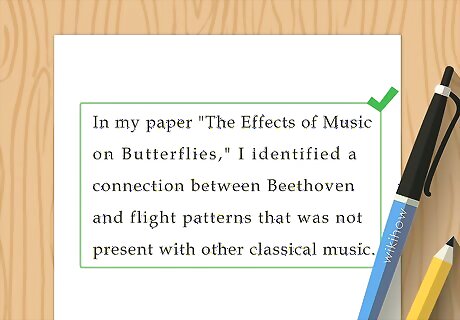
Use a lead-in that identifies your original work when summarizing or paraphrasing. This lets your reader know where they can find your original ideas and which parts of your work are new versus which are recycled. Often, your lead-in just needs to be a dependent clause before your main statement. However, you can include a sentence-long lead-in if you think it's appropriate. For example, you could write: In my paper "The Effects of Music on Butterflies," I identified a connection between Beethoven and flight patterns that was not present with other classical music. A longer lead-in be good for longer paraphrases or for when you need to briefly introduce your previous work.

Include a citation formatted for the writing style you're using. When you use a quote, paraphrase, or summary, you need to ensure that you've properly cited it. For example, you may need to include your last name and page number, depending on the formatting style you're using. Cite your own work just as you would another person's. MLA format is often used for language classes, arts, and the humanities. APA format is common for subjects like psychology, political science, history, and economics. Chicago Manual format is used for subjects like architecture, planning, and sometimes journalism. CSE is commonly used for science texts.
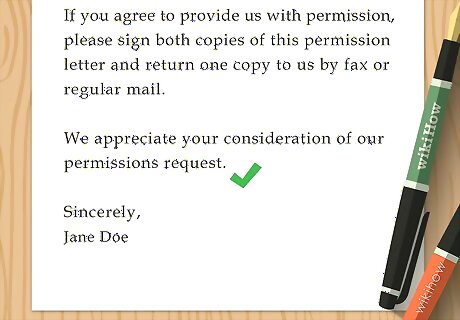
Get permission from the copyright holder if necessary. If you have published your work, such as in a journal or on a website, then the publisher will need to give you permission to reuse ideas from that piece. Otherwise, you may inadvertently infringe on the copyright, which could put you and your new publisher in a bind. You should also avoid submitting to multiple publications unless it's expected in your field. Get permission before you show your new work to other people, especially an editor. Make sure you tell the copyright holder how you plan to use the original text in your new work.













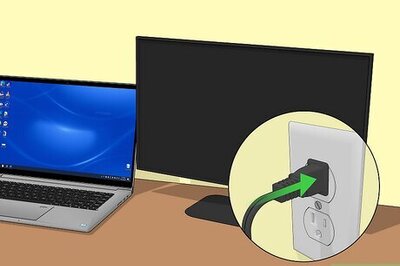
Comments
0 comment